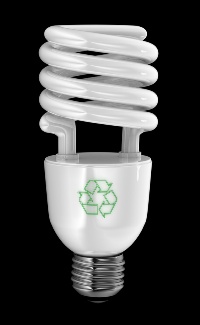With the rising cost of power as well as the environmental impact of electricity use regularly in the media, saving power is something we are frequently reminded we should be doing. We’ve collected an awesome list of 49 power saving tips you can do right now to save money on your power bill!
If you’re not sure how to start saving power, we have a great list of ideas below you can pick and choose from. From free super-quick ideas, to more expensive ones that will pay themselves off over a period of years, you will definitely find something you can do!
The first task on your list to reducing power costs, and your power bills, should be a trip to powerswitch. This site will let you know whether you’re on the cheapest plan for your family. You may be surprised how much money you can save be simply switching providers.
And, if your list isn’t big enough for your needs, then check out even more great power saving ideas on the Energywise website.
49 Power Saving Tips to Save Money
No cost power saving tips:
General appliances and lighting account for around 30% of your energy use.
- Turn off appliances
- Turn off lights
- Turn chargers off as soon as an item is fully charged
- Dry washing on the line rather than in a dryer. If it is not quite dry at the end of the day, finish it off inside or in the hot water cupboard.
- If there isn’t enough sun, dry washing on movable racks so you can chase the sun and bring them in quickly if it rains
- Putting your washing through an extra spin cycle helps it dry even faster
- Only run the dishwasher when it’s full and use the eco setting – but make sure there is plenty of space around the dishes so the water can get to all the nooks and crannies
- Fridges and freezers are most efficient when they are full as they lose a lot of cold air when they are opened. Try to reduce the number of times you open them if possible. To reduce the amount of cold air that may fall out if you have empty space in your fridge or freezer, put in some ice cream containers or plastic bottles full of water
- Thawing food in the fridge will help keep the fridge temperature down
- Cooling food on the bench before transferring to the fridge will prevent the fridge temperature rising
- Check your fridge and freezer temperatures. Fridges are most efficient between 2 and 4˚C, freezers between -15 and -18˚C.
Hot water uses around 27% of your electricity.
- Turn down the hot water cylinder – it should be 55˚C when it comes out of the tap and 60˚C at the cylinder; any less and you risk bacteria growing, any more and the burn risk is increased
- Use cold water to wash clothes
- Use cold water to rinse dishes and fill the jug
- Take shorter showers or share the bath water
- Turn off the hot water cylinder when you go away. Some people find turning off the hot water cylinder in the morning and turning it back on at night can save power. If your cylinder is large however, it may cost more to heat it back up from cold each day than it would to keep it running all the time.
Heating and cooling your home uses approximately 35% of your yearly electricity. The healthiest temperature for a house is between 18 and 21˚C. Any lower than that and you may use all the power savings on trips to the doctor!
- Turn down heaters to keep the room at 18˚C
- Use a timer so heaters don’t run for longer than they need to
- Turn off the heaters in living areas an hour or so before you go to bed. The warmth will remain for quite a while after they have been turned off
- In the cooler months, draw the curtains as soon as the sun has gone off the windows, this will retain the most heat
- Block off your fireplace when not in use, to prevent hot air escaping up the chimney
- When it is hot, keep windows and doors open when possible to cool the house down and draw the curtains when the sun hits a window.
Cooking uses around 8% of your electricity.
- Small appliances cook food more cheaply than the oven; use the microwave, toaster oven, sandwich press or electric fry pan where possible
- When using the oven, cook multiple things or things in succession. Turn the oven off 10 minutes before your food has finished as the residual heat will continue cooking it
- If you have room in the freezer, cook big batches of food and freeze some to use on another day
- Use lids on your pots when cooking.
Low cost power saving tips:
- Replace the seals on your fridge and freezer if they are worn. To check that your fridge and freezer seals are airtight, place a lit torch inside at night, close the door and turn off all the lights. If you see any light escaping, you may need to replace the seals
- Clean the coils on the back of your fridge and freezer, if they are dusty the appliances will not operate efficiently
- Replace regular lightbulbs with energy efficient ones
- Use timers on heaters, heated towel rails and even your hot water cylinder
- Install a water saving shower head. Your shower flow should be under 10 litres per minute. To check if yours is ok, place a 10 litre bucket under the shower, turn it on and set a timer for 60 seconds. If the bucket is nearly full or overflowing, a water saving shower head could save you money
- Buy a shower timer to make sure everyone knows when it’s time to get out
- Install flow control aerators on taps to reduce the flow but maintain the pressure
- Replace the washers or fixings of dripping taps
- Insulate your hot water cylinder and pipes
- Line your curtains with old blankets or duvets for extra insulation
- Install DIY window insulation kits onto windows (or stick bubble wrap on if the view is not so important)
- Stop draughts around doors and windows by using door snakes and self adhesive foam strips.
Ideas that will pay themselves off in time:
- If you have an old fridge or freezer, consider replacing them. New ones can be 40% more efficient
- Install solar or heat pump water heating
- Install a wetback which heats water through your fireplace
- Insulate your house – see our article on insulating your home for more information
- Replace curtains – the best ones are heavy with multiple layers and drape on the floor to stop warm air being sucked up underneath
- Add pelmets to the top of curtains
- Double or triple glaze windows
- If you have a fireplace you use often, consider installing ducting to transfer the heat to other rooms
- Replace electric heaters with heatpumps
- Install a ceiling fan to distribute heat in winter and move air in summer
- Plant trees that will shield your house from prevailing winds – but not the sun!
You should be able to look forward to some great savings once you have implemented some of these ideas. Make sure you keep track of your spending for each month of the previous year, and use that to see how much less you are spending now. We’d love to hear what other tips you have had success with in reducing your powerbill, please comment below.







Your blog is enlightening as well as detailed. Thank you for taking the time to put this together.
You are welcome. — Kiwi Families
I have some cooling tips that save power:
It’s essential to arrange furniture and drapes so they don’t restrict airflow from registers. Reduce your home’s heat gain by pulling drapes or shades–or installing awnings–over sun-facing windows.
Thank you Kiwifamilies – this article and a couple of others I’ve read on your site are great – simple, clear, well researched. Ta!
Thanks Rebecca – Glad you are enjoying it!!
Rochelle